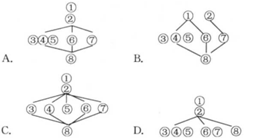题目内容
At a primary school in a small town in the east of South Carolina, second-grade teachers Garneau and Lynne are convinced that separating elementary-age boys and girls produces immediate academic improve?ment in both genders (性别).
David Chadwell, South Carolina's expert of single gender education says, "Boys and girls learn, hear and respond to their surroundings differently. We can teach boys and girls based on what we now know.,,
Male and female eyes are not organized in the same way, he explains. The organization of the male eye makes it sensitive to motion and direction. "Boys under?stand the world as objects moving through space, " he says.
The male eye is also drawn to cooler colours like silver and black. It's no accident that boys tend to create pictures of moving objects instead of drawing the happy-colourful family, like girls do in their classes.
The female eye, on the other hand, is drawn to warmer colours like red, yellow and orange. To attract girls, Chadwell says, the teacher doesn't need to move as much as in boy's class. Using descriptive phrases and lots of colours in presentations or on the blackboard gets their attention.
Boys and girls also hear differently. "When some?one speaks in a loud tone, girls understand it as yelling, ,,Chadwell says. "They think you're mad and can shut down. " Girls are more sensitive to sounds. He advises girls' teachers to watch the tone of their voices. Boys' teachers should sound more forceful, even excited.
A boy's nervous system causes him to be more cau?tious when he is standing, moving, and the room tem?perature is around 69 degrees Fahrenheit. Stress in boys, he says, tends to increase blood flow to their brains , a process that helps them stay focused. Girls are more focused when seated in a warmer room around 75 degrees Fahrenheit. Girls also respond to stress differ?ently. When exposed to threat and conflict, blood goes to their guts (肠道),leaving them feeling nervous or anxious.
These differences can be applied in the classroom, Chadwell adds. " Single gender programmes are about making the best use of the learning." 1. What is David Chadwell's attitude towards separating
elementary-age boys and girls while learning?
A. Supportive. B. Worried.
C. Concerned. D. Uninterested.
2. To attract boys in a class, the teacher .
A. must have a moving object in this hand
B. needs to wear clothes in a warm colour
C. has to speak politely
D. had better move constantly while teaching
3. Which of the following shows the organization of the passage?
(1 = Paragraph 1 2=Paragraph 2 3 = Paragraph 3 …8=Paragraph 8)
4. Which of the following students is most likely to be focused?
A. A boy sitting in a warm room.
B. A standing boy who is faced with stress.
C. A girl standing in a cold room.
D. A girl who is facing a lot of pressure.
【文章大意】本文桌一篇科普文,讲述男女学生在学习中的不同。
A 细节a解题。根据第二段中的"…'Boys and girls learn, hear and respond to their surroundings differently. We can teach boys and girls based on what we now know.,"和文章最后一句话'"Single gender programmes are about making the best use of the learning.,"可知,David Chadwell是支持男女分班学习的,故选A项。
D 细节理解题。根据第四段中的"It's no accident that boys tend to create pictures of moving objects instead of drawing the happy colourful family, like girls do in their classes."可知,故选D项。
A推理判断题。第一、二段是总论;第三至第五段讨论男女学生眼睛构造的不同;第六段讲述男女生听觉的差异;第七段讨论男女神经系统的差异;最后一段总结全文。故选A项。
B细节理解题。根据倒数第二段中的"A boy's nervous sys-tem causes him to be more cautious when he is standing, mov-ing..."可知,当他站着移动时,他的紧张系统会让他更加谨慎,故选B项。

 快捷英语周周练系列答案
快捷英语周周练系列答案